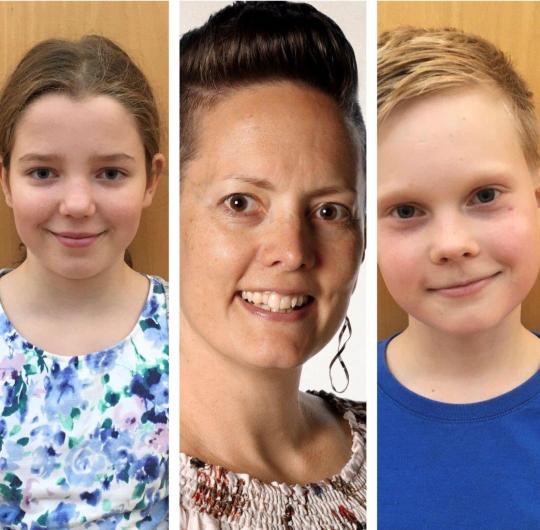A look back on the Code Week 2019 Student Meet: students become coding teachers in Finland
Publication date: March 12, 2020
During Code Week 2019, students from Finland, Spain and Malta participated in an online meeting where they presented Code Week activities they had participated in and talked about their overall Code Week experience
In Finland, Sofi and Rasmus participated in various activities from a CodyColor Battle Royale to an Hour of Code project. Lucía, Sara and Laura from Spain designed a video game in Scratch and
created a Joystick. In Malta, Sarah, Andrea, Jacob and Chloe developed a project centred on the need to protect the environment, learning to work with Scratch and then building their own
prototypes.
In this blog post, we learn more about the students’ and teacher’s experience in Finland, with students Sofi and Rasmus and their teacher Anu Kahri in a short interview.

Sofi and Rasmus, could you tell us more about the activities organised in your school during Code Week
2019?
Sofi: We got the opportunity to teach other classes how to do CodyColor and also doing it ourselves. When you step on a red square you turn 90° right when you step on a yellow square
you turn 90° left and when you step on a grey square you take one step forward. Most of the work during the week was group work. We only worked individually when doing CodyColor Battle Royale or code.org activities on the computer. And on the Hour of Code we actually helped each other a lot.
Rasmus: We even tried playing CodyColor on 12*13 squares with the whole class competing. Before this, e were teaching two other classes which also got to try to play on the 12*13 squares.

Anu, how would you say that what your students have learned is relevant for them?
Anu: Even if they only got a glimpse of what coding could be they learned that it is all around us and everywhere. I think the most important thing they probably learned was working together as a
group. They also got a lot more confident because they had the opportunity to teach, which was a really big motivation boost for them. In this project, the advantages and the skills they’ve learned are probably a little bit outside of coding but there is coding integrated into it.
Sofi: For me, the project was very motivating because I learned new things, coding was fun and there was no homework. It was something else that ordinary school work and it got me off normal classes.
Rasmus: I think group work is an important skill for life that you will always need! We also got more motivation for learning new things. And we got a glimpse that coding is all around us. If you
didn’t know your left and right before the project you should have learned it by now. If you wanted you could have a red dot on your hand because when you step on a red square you should turn 90° right.
What is your best memory of this project?
Anu: I think one of the best parts was the night school where we came back to school at 17.00 and a lot of parents joined. It was fun competing with parents on Battle Royale and beating them was the best. Later on, the parents left and the students and I spent the night at school. And since coders always eat a lot of pizza, we had pizza and we continued with pixel colouring, coding and we had games at school, running around, and sleeping in the gym together.

Have you encountered any challenges during the project? What would you say to teachers who are thinking of making the step?
Anu: Many times, teachers say they don’t have time for stuff like this. Obviously, we took some time away from math, English and other classes, but I do not think they are missing anything, but actually learning a lot more. This is what I try to tell the teachers. Scratch Jr. is, for example, a great tool for English or Finnish classes because you use it to write and read stories. You can take a lot of stuff from your other subjects and just do it through coding, where you catch two flies at one time. My last tip for teachers is that: you should take advantage of the kids because usually
the things that teachers are nervous about or scared of, the children are not.
Sofi: If there is a teacher that is planning to do this kind of project but is too scared students could say ‘I can come and help you!’ or ‘Believe in yourself!’, this could help your teachers’
motivation. If it does not work you could explain the instructions very clearly or you could say ‘think that there is no one there, what would you do?’
Anu: Exactly, I often tell teachers when I give ICT training course that they should allow the students to help them and that they shouldn’t worry. You don’t need to know it all! The kids
will help you. Many adults are scared of pressing a button, but the kids are not scared of trying new things and they can learn very well on their own. All of my students became tutors this year within the Cody project.
Are you interested in knowing more? Head over to the full Student Meet here!

